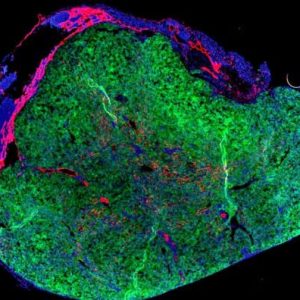
Narkewicz MR, Horslen S, Hardison RM, Shneider BL, Rodriguez-Baez N, Alonso EM, Ng V, Leonis MA, Loomes KM, Rudnick DA, Rosenthal PJ, Romero R, Subbarao GC, Li R, Belle SH, Squires RH for the Pediatric Acute Liver Failure Study Group. Enhancing Diagnostic Specificity in Pediatric Acute Liver Failure by Adapting a Learning Collaborative Approach. Clin Gastroenterol Hepatol. 2018; In Press; PMID: 29723692.
ABSTRACT
BACKGROUND & AIMS: Many pediatric patients with acute liver failure (PALF) do not receive a specific diagnosis (such as herpes simplex virus or Wilson disease or fatty acid oxidation defects)-they are left with an indeterminate diagnosis and are more likely to undergo liver transplantation, which is contraindicated for some disorders. Strategies to facilitate complete diagnostic testing should increase identification of specific liver diseases and might reduce liver transplantation. We investigated whether performing recommended age-specific diagnostic tests (AS-DTs) at the time of hospital admission reduces the percentage PALFs with an indeterminate diagnosis.
METHODS: We performed a multinational observational cohort study of 658 PALF participants in the United States and Canada, enrolled at 10 medical centers, during 3 study phases from December 1999 through December 2014. A learning collaborative approach was used to implement AS-DT using an electronic medical record admission order set at hospital admission in phase 3 of the study. Data from 10 study sites participating in all 3 phases were compared before (phases 1 and 2) and after (phase 3) diagnostic test recommendations were inserted into electronic medical record order sets.
RESULTS: The percentage of subjects with an indeterminate diagnosis decreased significantly between phases 1-2 (48.0%) and phase 3 (to 30.8%) (P = .0003). The 21-day cumulative incidence rates for liver transplantation were significantly different among phase 1 (34.6%), phase 2 (31.9%), and phase 3 (20.2%) (P = .030). The 21-day cumulative incidence rates for death did not differ significantly among phase 1 (17.9%), phase 2 (11.9%), and phase 3 (11.3%) (P = .20).
CONCLUSIONS: In a multinational study of children with acute liver failure, we found that incorporating diagnostic test recommendations into electronic medical record order sets accessed at time of admission reduced the percentage with an indeterminate diagnosis that may have reduced liver transplants without increasing mortality. Widespread use of this approach could significantly enhance care of acute liver failure in children.
For full text, please click here.








